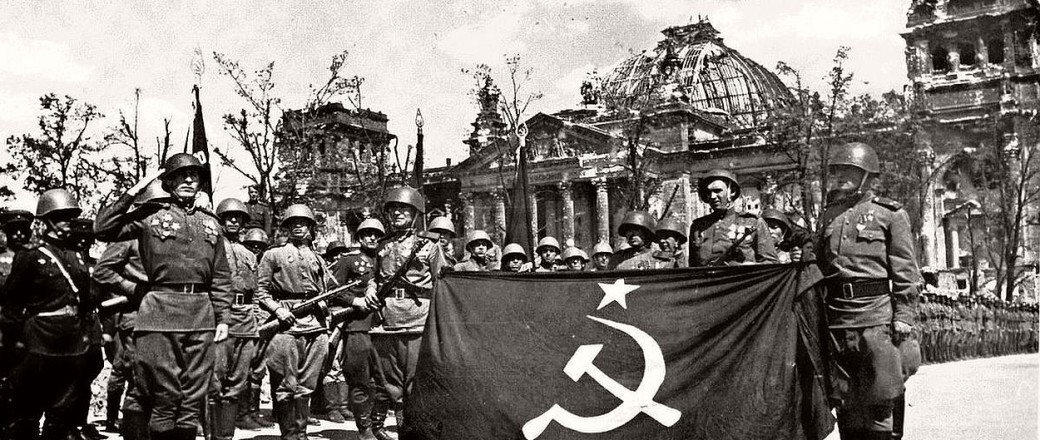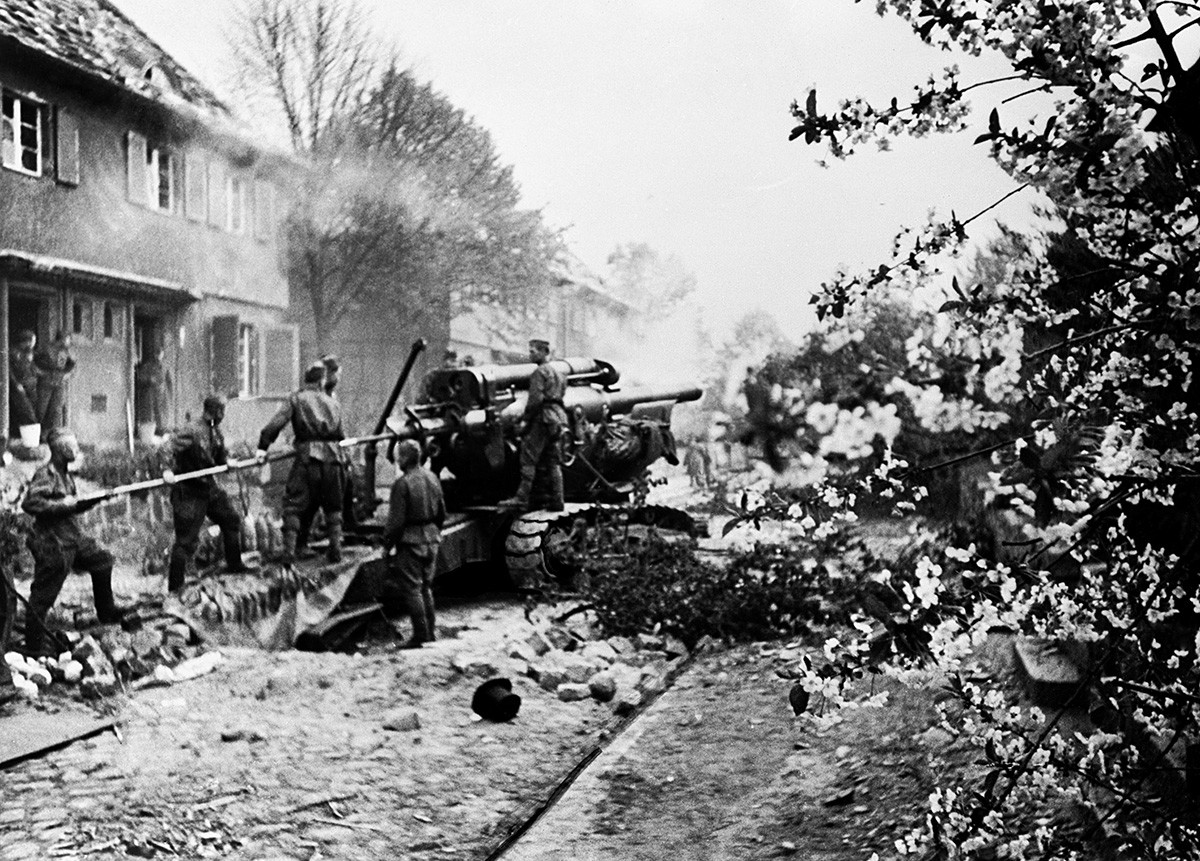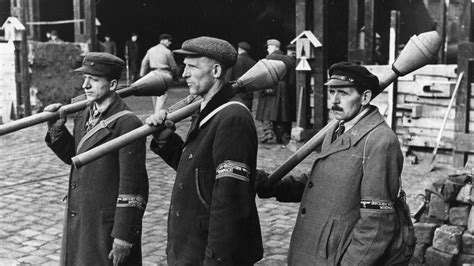We fought not just for our land, but to crush the beast in its lair. When Berlin fell, I wept for all we had lost to get there.
Lyudmila Pavlichenko (Soviet Sniper, from Interviews)
The Battle of Berlin was the final offensive of the Soviet Red Army which completed the destruction of the genocidal Nazi dictatorship and its thousand year Reich. Taking place from April 16 to May 2, 1945, it marked the end of German fascism which, together with its European allies, were responsible for the deaths of tens of millions during World War Two.
The Red Army’s liberation of Hitler’s capital is now ignored by the collective West with the current Russian government not invited to the 80th anniversary remembrance ceremonies in Berlin.
Since the victory at Stalingrad, back in early February 1943, the Soviet forces had pushed westward through the destroyed wastelands of the USSR and broke the back of the German Wehrmacht at Kursk in 1943 and Operation Bagration in July 1944. Westwards the Red Army pushed as it liberated first Poland, then the rest of Eastern Europe and then into Eastern Germany. By mid April 1945 the Soviet armies were ready to launch a massive assault on the German capital, while Hitler and his closest associates retreated to an underground bunker beneath the Reich Chancellery.
Initial Soviet Offensive (April 16, 1945)
The Battle of Berlin began on April 16, 1945, with a massive Soviet artillery bombardment along the Oder River front. Three Soviet Army groups positioned themselves for the assault:
Marshal Georgy Zhukov's 1st Belorussian Front attacked from the east, with the primary objective of capturing Berlin. Zhukov's forces faced the formidable German defences at the Seelow Heights, a strategic high ground about 90km east of Berlin.
Marshal Ivan Konev's 1st Ukrainian Front attacked from the south-east, with orders to encircle the city from the south.
Marshal Konstantin Rokossovsky's 2nd Belorussian Front approached from the north, tasked with preventing German reinforcements from reaching Berlin.
The Soviet offensive began with over 41,600 artillery pieces firing on German positions.
The Red Army had amassed approximately 2.5 million soldiers, 6,250 tanks, and 7,500
aircraft for this final push.
German defences were commanded by General Gotthard Heinrici, who had anticipated the Soviet attack and prepared defensive positions along the Oder River and at the Seelow Heights. The German forces were severely depleted by this stage of the war, and numbered around 10,000 men including the 9th Army. It consisted of regular Wehrmacht units, Waffen-SS divisions, Volkssturm (civilian militia), and Hitler Youth.
On April 16, Zhukov launched a massive artillery barrage and attacked the Seelow Heights, a heavily fortified German defensive line. He used hundreds of searchlights to blind the German defenders of the heights. The Battle of the Seelow Heights proved more difficult than the Soviets had anticipated. General Heinrici had deliberately withdrawn his main forces from the first line of defence to the second line on the heights, which saved many German lives when the initial Soviet bombardment fell on largely empty positions.
The marshy terrain of the Oder floodplain, which had been deliberately flooded by the
Germans, slowed the Soviet advance. Soviet tanks and heavy equipment struggled to
navigate the waterlogged ground, creating bottlenecks and traffic jams.
The Red Army’s initial progress was also slow due to stubborn resistance and minefields. The Soviet breakthrough at the Seelow Heights took three days from April 16–19. By April 19, the Soviets broke through, opening the path to Berlin. The German 9th Army was forced to retreat, though some units were encircled later.
As Zhukov’s forces pushed forward against fierce German resistance at the Seelow Heights those led by General Konev's forces made better progress in the south, advancing toward Berlin from the south-east. Meanwhile, Marshal Rokossovsky's forces continued their advance from the north, putting pressure on the German defences from multiple directions.
By the end of April 19, the Soviet forces had broken through the main German defensive lines and were poised to encircle Berlin. The German Army Group Vistula was in full scale retreat having taken very heavy casualties.
Encirclement of Berlin April 20-21, 1945
On April 20, 1945, Hitler's celebrated his 56th birthday. While he received congratulations in his bunker beneath the Reich Chancellery, Soviet forces were rapidly encircling the city:
Zhukov's forces reached the northeastern suburbs of Berlin.
Konev's forces approached from the south, with elements reaching the southern outskirts of the city.
Rokossovsky's forces continued to advance from the north, completing the encirclement.
By April 21, the first Soviet units had entered Berlin's outer suburbs. Stalin had deliberately fostered competition between his generals, particularly Zhukov and Konev, to see who would capture Berlin first. This competition drove the rapid Soviet advance but also led to some coordination problems.
Inside Berlin, Hitler issued his "Nero Decree," ordering the destruction of all infrastructure to prevent its use by the advancing Soviets. However, Albert Speer, Hitler's Minister of Armaments, largely ignored these orders to preserve what remained of Germany. This of course didn’t prevent the destruction of many bridges and other critical infrastructure by fanatical Nazis in a vain effort to stop the advance of the Red Army.
The German Wehrmacht put up stiff resistance at great cost in casualties. Yet it was unable to stop the relentless advance of the Soviet armies around Berlin. The historian David Gantz notes the numerical superiority of the Red Army which overwhelmed the Nazi's depleted forces, which lacked equipment, fuel, and experienced soldiers.
Meanwhile, Soviet logistics ensured consistent supplies of ammunition, fuel, and food, critical for prolonged urban warfare. In contrast, German logistics were crippled by Allied bombing and resource shortages, exacerbating defensive weaknesses.
The German 9th Army, positioned south-east of Berlin, having been pulverised by Red Army attacks, was now in danger of being cut off as Soviet forces completed their encirclement of the city. In his memoirs Marshal Zhukov highlighted the double-envelopment strategy of the Red Army to encircle Berlin, isolating it from reinforcements and ensuring a rapid collapse of German defences.
Battle in Berlin (April 22-25, 1945)
On April 22 Stalin issued his final assault orders to Zhukov and Konev, defining the
operational boundaries for their forces within Berlin.
On April 22 German General Walther Wenck's 12th Army was ordered by Hitler to attempt a break through to Berlin from the west. However, Wenck prioritized aiding the 9th Army and civilian refugees instead of coming to the aid of the Fuhrer. By April 28-29 Wenck’s 12th Army reached Beelitz in south-west Berlin, and made contact with the remnants of the 9th Army and fleeing civilians. They managed a partial link up in the face of ferocious bombardment by the Red Army and managed to retreat across the Elbe river to surrender to American forces.
On April 23, General Helmuth Weidling, initially sentenced to death by Hitler due to a misunderstanding about troop movements, was appointed as the commander of the Berlin Defense Area after the misunderstanding was cleared up. The forces at the disposal of Weidling’s were a ragtag mix of Wehrmacht and Waffen-SS troops, Volkssturm militia (comprised of old men and boys), Hitler Youth, and police units.
As Soviet forces penetrated deeper into Berlin, the battle transformed into brutal urban combat. Street by street, building by building, the fighting intensified. Soviet forces used their experience in urban combat gained from Stalingrad and other battles. They employed heavy artillery to reduce buildings to rubble, used flamethrowers to clear defenders, and advanced with tank and aerial support.
The bloody combat took an emotional toll on soldiers of both sides. A letter from a Red Army soldier to his family, archived in the Russian State Military Archive (RGVA), reflects this emotional toll:
Mama, I saw things no man should see. The Spree River ran red with blood. But soon, we will plant our flag here, and this war will end.
David Gantz also noted the importance of night operations to exploit German disorientation. Throughout the combat on the Eastern Front German troops exhibited a strong dislike of fighting at nightfall.
Marshal Zhukov in his memoirs captured the intensity of the urban combat for the Nazi capital:
The streets of Berlin were choked with rubble and the stench of death. Every house, every cellar, had to be taken by storm. The Germans fought with the desperation of the doomed.
As each day passed the collapse of German command structures continued apace. The Wehrmacht’s defence degenerated into a series of local uncoordinated actions. Hitler’s refusal to permit tactical retreats, trapped Wehrmacht forces in untenable positions often leading to their annihilation. His reliance on poorly trained Volkssturm militias and Hitler Youth units, who lacked the experience to counter Soviet veterans was doomed to failure.
A member of the Volkssturm (militia units) wrote in a diary recovered after the battle:
We are old men and boys facing tanks with rifles. The Russians show no mercy. Every window, every cellar is a death trap. Berlin is hell, and we are already in its grave.
As Red Army units pushed closer to the centre of Berlin the Gestapo and SS combed through cellars looking for men to press gang into makeshift combat units. Desertions were common amongst Sturmabteilung militia (comprised of old men and boys) who had no training and were poorly equipped. Hundreds of men were hung for desertion and cowardice in the face of the Soviet enemy.
A 16-year-old Hitler Youth member recounted decades later:
They gave us Panzerfausts [anti-tank weapons] and told us to stop Russian tanks. We believed we could save Germany. By the end, I hid in a basement, crying for my mother.
The civilian population suffered tremendously during this phase of the battle, enduring artillery bombardment, non stop aerial bombing, street fighting, and atrocities committed by both sides. The Berlin based novelist Heinz Rein in his novel Berlin Finale describes how the Luftwaffe and German artillery fired repeatedly on areas they knew contained German civilians.
Throughout the battle most civilians hid in basements, bunkers and underground tunnels.
Amidst the chaos of the fighting the Nazi regime collapsed and the civilian population was left to fend for itself. Venturing outside to try and search for food and water became a herculean task. One anonymous account from this period recounts, "The streets were unrecognizable—just mountains of rubble. The smell of burning flesh and gunpowder hung in the air. We stepped over bodies to fetch water."
The Berlin based writer Heiz Rein, in his novel Berlin Finale describes in apocalyptic tones the final days of the battle for Berlin:
26 April. The battle for Berlin has reached a stage that will later be described as the Sodom and Gomorrah of a modern city. Dawn breaks, its pale, gloomy light seeps onto the sea of debris: a new day is beginning. The cannon will begin to sound, spreading death and ruin over the city, the planes are darting overhead again like antediluvian pterodactyls and striking at everything alive with their iron beaks, soldiers will again be driven into senseless battle, killed or mutilated, women desperately concerned about their children, wander the rubble filled streets in search of milk and bread, and are mown down by death’s scythe. Millions of people go on cowering in cellars and underground tunnels, freezing, starving, feverish and terrified, …
Final Assault and Hitler's Death April 26-30,1945
As Soviet forces converged on central Berlin, the battle reached its climax. The Battle for the Reichstag became one of the most iconic struggles of the final days. The Soviet leadership had designated this building as a symbolic target, representing the heart of Nazi Germany. After fierce fighting, Soviet soldiers raised their flag over the Reichstag on April 30, though fighting within the building continued for some time.
In the government district, Soviet forces closed in on the Reich Chancellery and Hitler's bunker. On April 29, Hitler married his long-time companion Eva Braun in the bunker. On April 30, with Soviet forces just a few hundred meters from his bunker, Hitler committed suicide along with Eva Braun. Before his death, Hitler had appointed Grand Admiral Karl Dönitz as his successor. Joseph Goebbels, Hitler's propaganda minister, and his wife Magda also committed suicide on May 1, after poisoning their six children.
The German defenders were now fighting without central leadership, with isolated
pockets of resistance continuing throughout the city.
German Surrender (May 1-2, 1945)
With Hitler dead and Soviet forces in control of most of Berlin, the end came quickly. General Helmuth Weidling, Commander of Berlin’s Defense, issued a surrender order on April 30, 1945, in which he acknowledged the futility of continuing resistance:
Further resistance is senseless. Every hour you prolong this fight adds to the terrible suffering of Berlin’s civilians. Lay down your arms.
On May 1, German Generaloberst Hans Krebs approached Soviet General Vasily Chuikov with a flag of surrender, informing him of Hitler's death and attempting to negotiate terms. However, the Soviets would accept only unconditional surrender.
On May 2, General Weidling, the commander of Berlin's defence, surrendered the city to the Soviet forces. The formal surrender was broadcast over the radio to all remaining German troops.
Some German units, particularly those west of Berlin, attempted to flee westward to surrender to American or British forces, fearing harsh treatment by the Soviets. Fighting continued in areas outside Berlin until the general German surrender on May 8 (May 9 in the Soviet Union due to time zone differences).
The Battle of Berlin was one of the bloodiest battles of World War 2. Casualty figures are debated due to chaotic record keeping but there is a certain consensus on the following casualty figures for the battle. German military deaths amounted to around 100,000 with 480,000 captured/surrendered with many dying in Soviet captivity. German civilian casualties amounted to 50,000 with most killed by artillery, street fighting or suicide. The city itself was left in complete ruins, with much of its infrastructure destroyed.
The Red Army suffered massive losses due to the fanatical resistance of German troops following Hitler’s orders to “fight to the last man.’’ Estimates vary from 81,000 to over 100,000 killed while Soviet forces suffered over 280,000 men wounded in action.
The battle for the Nazi capital was a catastrophic human tragedy with total deaths (military and civilian) exceeding 200,000 in Berlin alone. The Red Army paid a very steep price for its victory over its genocidal enemy, but its overwhelming numbers, superior morale, battle tactics and resources ensured the collapse of Nazi Germany by May 8, 1945.

The Soviet victory in Berlin marked the end of the Third Reich and Hitler's vision of a
thousand-year German empire based on the enslavement of the people of the Soviet Union and the genocide of both Jews, Slavs and many other groups. The victory over German fascism came at a terrible cost for humanity with many estimates putting the total death toll for WW2 at over 50 million.
As we commemorate the 80th anniversary of the defeat of German fascism and its European allies we should remember the words of the great German writer Berthold Brecht who warned us not to be complacent and work continuously to prevent the recurrence of fascism:
Do not rejoice in his defeat, you men. For though the world has stood up and stopped the bastard, the bitch that bore him is in heat again.




